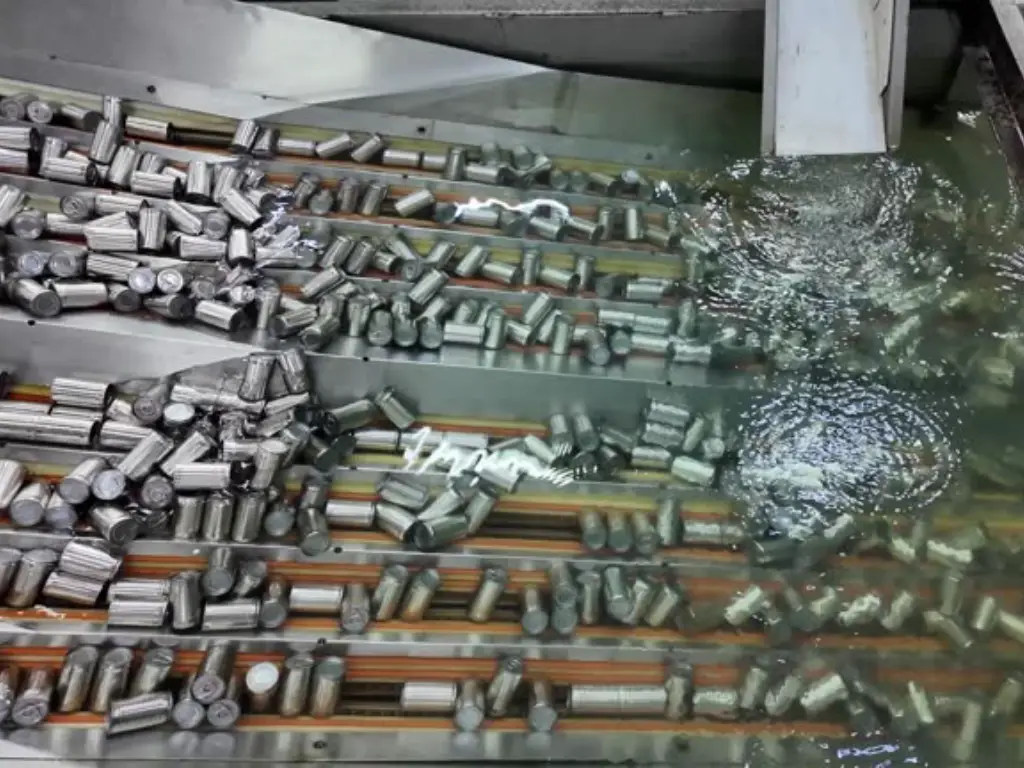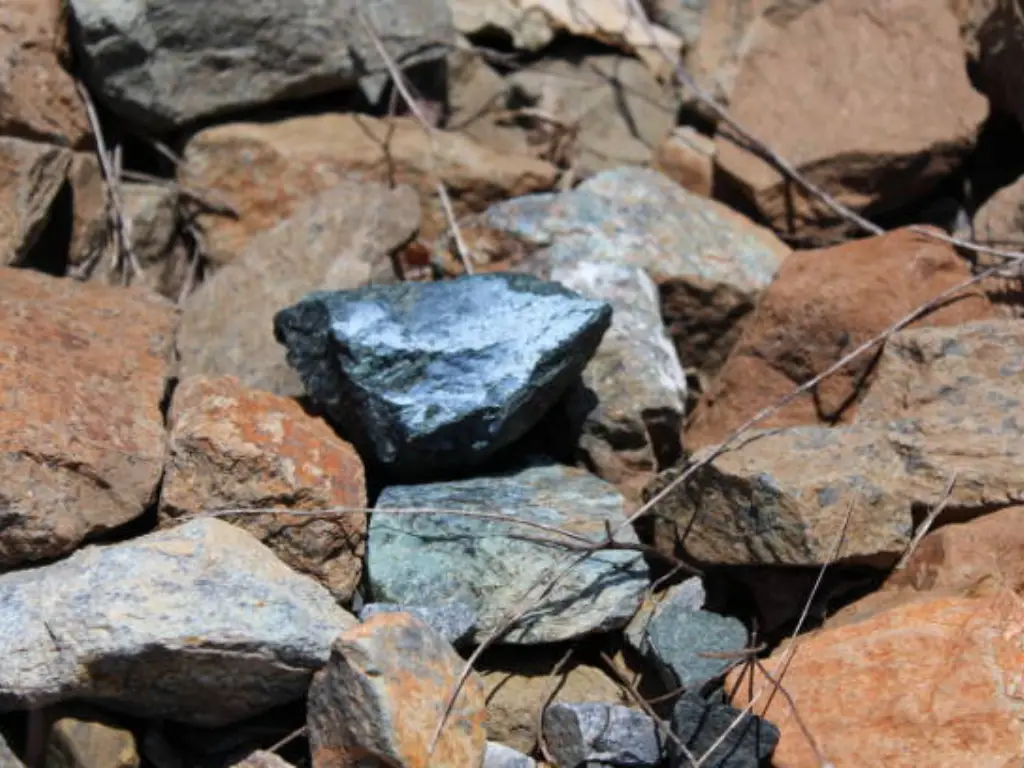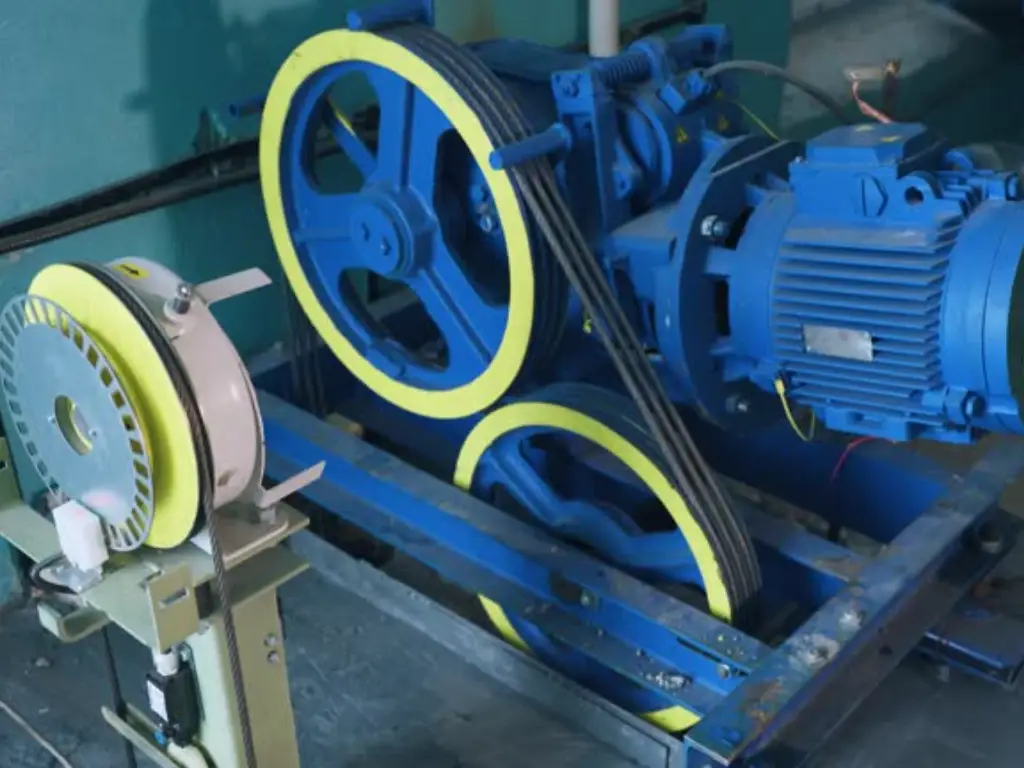- Home
- Blog
- Mineral Solution
- 3 Major Types Of Gold Ore: From Mining To Extraction
Why Does Gold Ore Type Determine Extraction Efficiency?
How are the three most common types of gold ore transformed from raw ore into glittering gold? Global gold resources are widely distributed, ranging from loose surface placer gold deposits to deep-buried, refractory gold deposits. These different deposit types not only have vastly different geological characteristics but also directly determine the difficulty of mining and the choice of extraction processes. This article will focus on three major types: placer gold ores, vein gold ores, and associated gold ores. It will provide an in-depth analysis from geological characteristics to extraction processes such as gravity separation, flotation, and cyanide leaching, offering mining professionals a practical guide from resource assessment to process selection. It will help accurately match deposit types with the optimal technological path, achieving cost reduction and efficiency improvement.
1. Placer Gold Ore: Surface Sedimentary Gold Deposits
What Is Placer Gold Ore?
Placer gold ore is a loose sedimentary gold deposit formed by river/glacial transport. It refers to loose gold deposits formed when gold elements are weathered and eroded on the Earth’s surface, transported by water or glaciers to low-lying areas, and deposited. The core mineralization process can be summarized in three stages: “source-transport-reservoir.” The source of the ore is often gold-bearing primary rock (such as quartz vein gold deposits). Through long-term temperature changes, freeze-thaw cycles, and chemical oxidation, gold particles are separated from the parent rock. During transport, the turbulent flow of rivers separates gold from lighter minerals, leading to enrichment in river bends, convex banks, or terraces where the flow slows. Glacial transport, through the grinding and deposition of glacial till, forms glacial till-type placer deposits. Global placer gold production accounts for approximately 10%-15% of total gold production, making it one of the most important sources of gold.
Key Characteristics
Particle characteristics of placer gold deposits include: particle size mostly between 0.1-2 mm, shape varying from round to irregularly angular depending on transport distance, and surface often covered with a thin film of iron-manganese oxides. Since placer gold particles are not chemically bonded to gangue minerals, they coexist only through physical adsorption or mechanical mixing. They can be directly separated without crushing or grinding, significantly reducing beneficiation costs. Therefore, placer gold is easily liberated, but the presence of these associated minerals increases the difficulty of gold extraction.
Placer gold is usually associated with specific types of associated minerals: in alluvial deposits, it is often associated with heavy minerals such as magnetite and ilmenite; coastal placer gold is often co-enriched with zircon and monazite. This characteristic provides ideal conditions for gravity separation, achieving a preliminary recovery rate of over 80% using a simple spiral sluice.
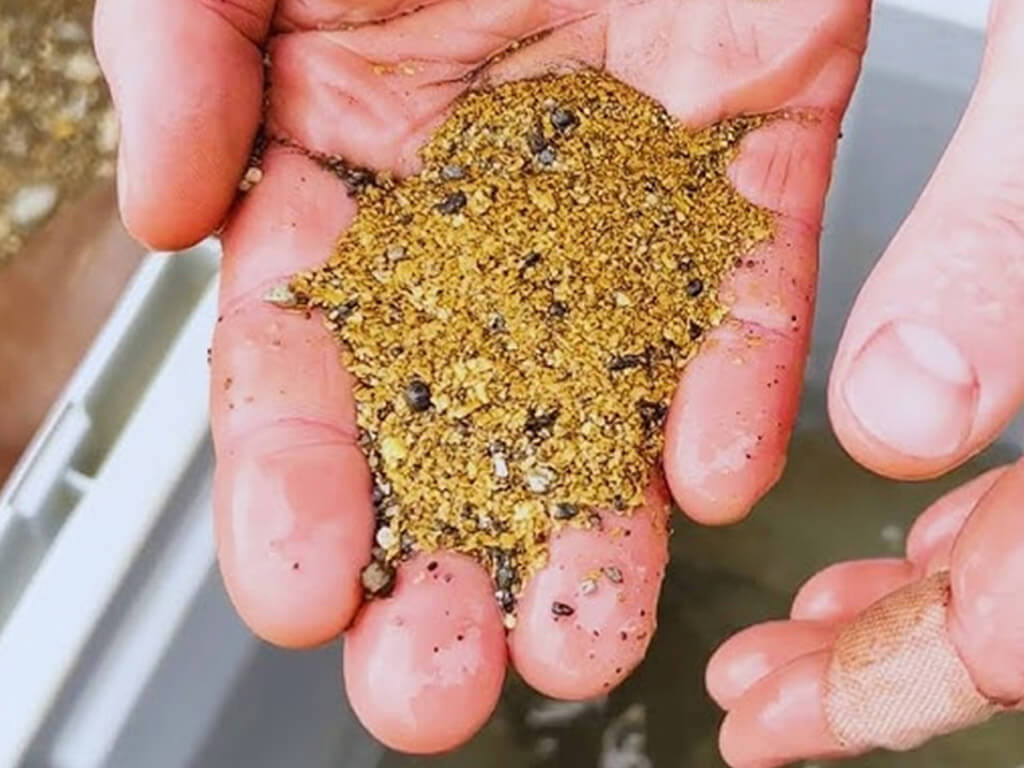
Placer Gold Mining Methods:
Early placer gold mining relied entirely on manual panning. Miners used gold pans to separate gold from impurities using water flow. This method is still prevalent in very small mines and among amateur prospectors. Currently, placer gold mining utilizes dredgers, which use bucket elevators on floating platforms to dredge riverbed sediments. Gold particles are then extracted via a screening system, making it suitable primarily for wide waterways. In recent years, the widespread use of metal detectors and portable washing equipment has significantly improved the precision and recovery rate of placer gold mining.
Placer Gold Ore Extraction
Placer gold ore extraction primarily relies on gravity separation technology. For example, gold sluices use the water flow on an inclined surface to cause gold particles to settle in the “grids” at the bottom of the sluice. This method has a large throughput but a low enrichment ratio, making it suitable for roughing. Shaking tables utilize asymmetric reciprocating motion to achieve stratification of gold and light minerals in inclined water flow, achieving enrichment ratios of 100-500 times. This method is commonly used for beneficiation, but has a small throughput (10-20 t/d; some models have a maximum capacity up to 60 t/d). Centrifugal concentrators use high-speed rotation to generate centrifugal force, accelerating the settling of fine gold particles (<0.1mm), achieving a fine particle recovery rate of over 90%. Jigging machines utilize vertical pulsating water flow for separation, suitable for processing coarse-grained gold (>0.5mm), with a single machine’s hourly processing capacity of 1-25 tons.
Currently, we have developed modern mobile gold washing plants, integrating screening, washing, and gravity separation systems. These mainly include a one-stop gold washing system consisting of a trommel screen/rotary scrubber and a gold sluice box; and a small-scale gold or diamond processing plant combining a drum screen/drum washing machine and a jigging separator. Both can be mobile to the mining site.
Place Gold Ore Extraction Flow
The placer gold extraction process requires three stages of processing to convert the ore into pure gold. First, the surface clay or other impurities are washed away using a rotary scrubber or trommel screen/vibrating screen or other washing equipment, while pebbles and large gravels are removed by screening, retaining fine sand. Then, the ore enters a gravity separation unit, which uses density differences to separate gold-bearing heavy sands, achieving a tailings rejection rate of over 95%. The selection stage focuses on deep impurity removal: magnetic minerals (such as magnetite) contained in heavy sand are separated by wet magnetic separators, while non-magnetic minerals (such as quartz and feldspar) are further purified by shaking tables or spiral sluices to finally obtain gold concentrate.
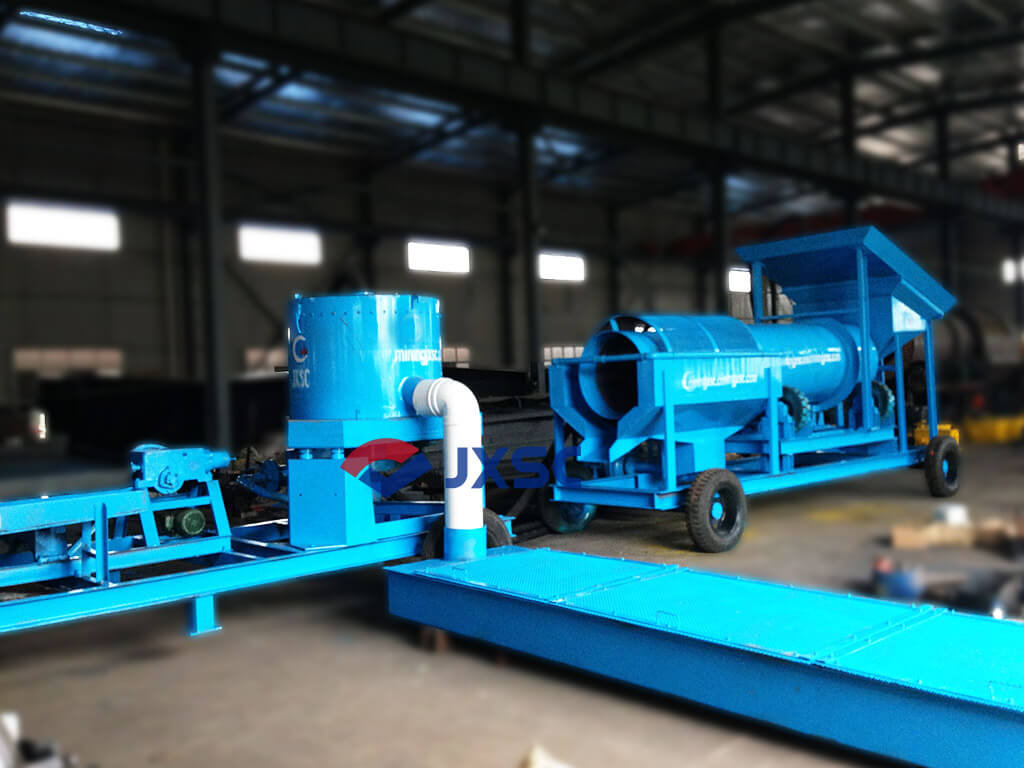
2. Vein Gold Ore: Vein-like Hard Rock Gold Deposits
What Is Vein Gold Ore?
Vein gold deposits are primary gold deposits found in quartz veins or sulfide veins. They are a direct product of deep hydrothermal activity on Earth. Gold is hosted in quartz veins, carbonate veins, or sulfide veins as native gold or gold-bearing sulfides (such as tellurium gold or gold-silver ore), exhibiting a clear filling or replacement contact relationship with the surrounding rocks. The mineralization process depends on a hydrothermal fluid circulation system: when gold-rich magmatic hydrothermal fluids rise along crustal fault zones, a sudden pressure drop causes silica supersaturation and precipitation, forming the main body of the quartz vein. Simultaneously, gold co-precipitates with sulfides such as pyrite and galena. Vein-like hard rock gold deposits are also a major source of high-grade gold deposits globally.
Key Characteristics
The core economic value of vein gold deposits lies in their high grade. Industrial grades typically range from 3 to 15 g/t, with some rich sections reaching 30-50 g/t, which is significantly higher than in placer gold deposits. Sulfides dominate the mineral composition: pyrite accounts for 60%-80% of the total sulfides, while galena and sphalerite account for 10%-20%. Gold minerals are often found as microparticles embedded in the interstices of the sulfide lattice or encapsulated within it. This characteristic necessitates the use of crushing and grinding to achieve individual mineral liberation, ensuring a gold mineral liberation degree of ≥90%, laying the foundation for subsequent beneficiation processes such as flotation and leaching.
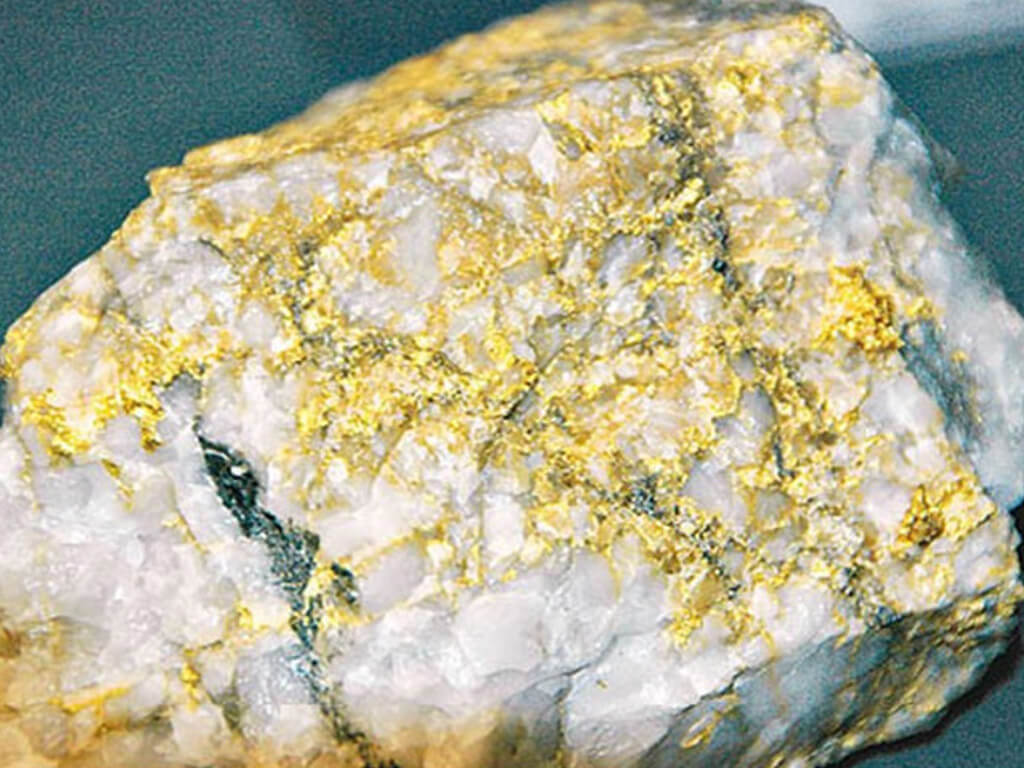
Vein gold ore Mining methods
The mining method for vein gold deposits depends on the depth and shape of the ore body. Open-pit mining is suitable for near-surface ore bodies, involving blasting after stripping the overburden. For deep, steeply sloping veins, underground mining techniques are required, including shaft development, subgrade caving, or room-and-pillar methods. Recent technological advancements have driven the application of automated drilling and unmanned transport equipment to reduce the risks of deep-well mining. Regardless of the method, geological modeling is necessary to optimize the mining sequence and reduce dilution rates. Environmental requirements also prompt companies to adopt backfilling methods to control surface subsidence.
Vein Gold Ore Extraction
● Gravity separation is a pretreatment process for vein gold ore. It primarily utilizes the density difference between gold and gangue to achieve efficient recovery of coarse-grained gold. Gravity separation equipment, such as jigs, shaking tables, and spiral chutes is used. Through the combined action of water flow pulsation and gravity, gold particles settle to the bottom of the bed to form a concentrate. Gravity concentration is particularly suitable for processing ores containing coarse-grained gold and can be used as a standalone process or a pre-enrichment stage before flotation, significantly improving the overall recovery rate.
● Flotation is used for gold associated with sulfides, using xanthate collectors to separate the gold-pyrite complex.
● Leaching is divided into heap leaching and stirred leaching. Gold is dissolved in a cyanide solution and then recovered by displacement with activated carbon or zinc powder. Heap leaching is used for low-grade oxide ores, while stirred leaching is used for high-grade sulfide concentrates. For ores with a high proportion of free gold, direct cyanidation leaching remains the preferred method.
● Complex and difficult-to-process gold ores require a combined process of flotation + roasting + cyanidation. Gold extraction from vein ore typically requires a combination of methods, and the specific process selection depends on your ore information, processing volume, budget, and other requirements.

3. Associated Gold Ore: Polymetallic Symbiotic Type
What is Associated Gold Ore?
Associated gold ore refers to a type of gold deposit where gold is present in trace amounts as an associated element within sulfide deposits such as copper, lead, and zinc. It requires comprehensive recovery through the beneficiation process of the main ore. Its mineralization mechanism is closely related to large-scale magmatic-hydrothermal activity: when intermediate-acidic magma rich in metallic elements intrudes into the shallow crust, it triggers long-term hydrothermal circulation. Gold migrates along with ore-forming elements such as copper and molybdenum through chloride complexes, accumulating as microscopic inclusions or lattice substitutions in minerals such as chalcopyrite, pyrite, and galena during sulfide crystallization.
Key Characteristics
The core economic value of associated gold ore lies in its low-grade, large-scale resource characteristics. The industrial grade is generally 0.1-1 g/t, but relying on the huge reserves of the main ore, the total reserves of associated gold can reach hundreds of tons. Significant polymetallic symbiosis is observed in associated gold ores, often containing rare and dispersed elements such as silver, selenium, and tellurium, in addition to gold. Comprehensive recovery can improve the economic benefits of mines by 20%-30%.

Associated Gold Ore Extraction
Associated gold ore particles are mostly embedded in sulfide lattices or encapsulated, requiring simultaneous recovery through flotation and leaching processes of the main ore to avoid resource waste.
● Gravity-Flotation Combined Process: Gravity separation is suitable for associated ores containing coarse-grained gold and is usually used as a pretreatment process in conjunction with other methods. A jig pretreatment is added before copper flotation to recover coarse-grained gold using the density difference between gold and sulfide ores.
● Carbon-In-Leach (CIL) is suitable for fine-grained disseminated associated gold ores. Activated carbon is added during cyanide leaching to reduce the loss of gold-cyanide complex ions through simultaneous leaching and adsorption.
● Carbon-In-Pulp (CIP) first completes cyanide leaching, then adsorbs the precious liquor through an activated carbon column, suitable for processing high-impurity slurry associated with gold ores.
● The flotation-cyanidation combined process involves first flotating sulfide ore and then leaching gold. The main process includes copper flotation to obtain gold-bearing chalcopyrite concentrate, which is then concentrated, filtered, and fed into a pressure cyanidation leaching system.
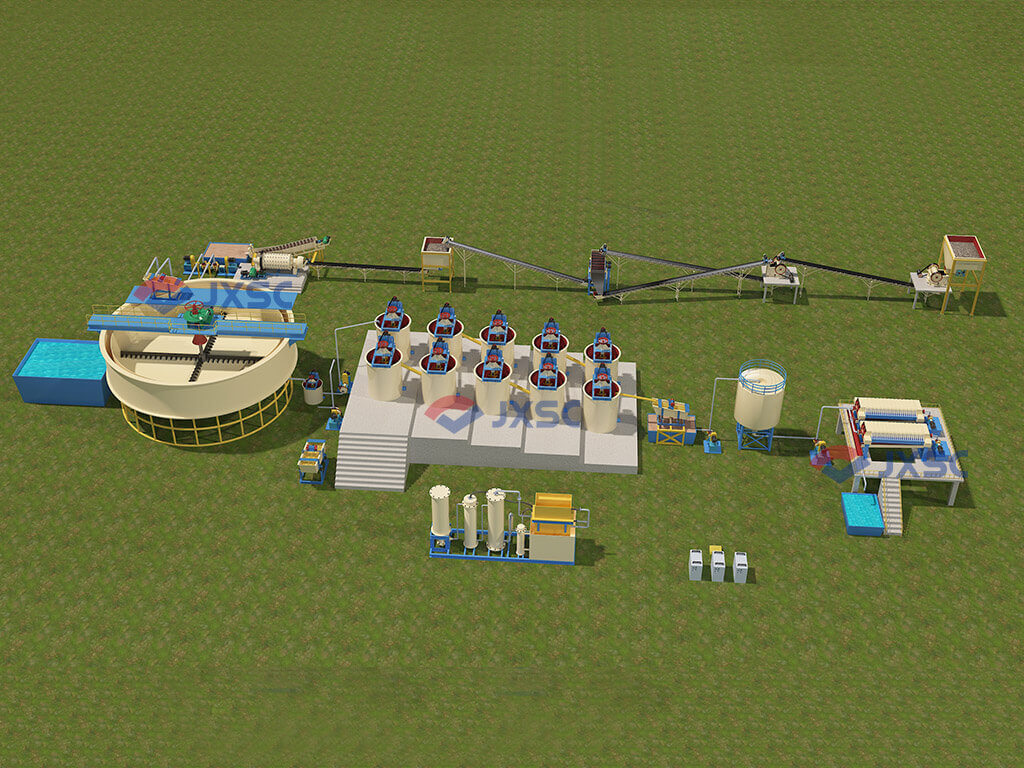
Conclusion: Maximize the value of gold mine resources
| 3 Major Types Of Gold Ore | Ore Characteristics (Type/Occurrence/Associated Minerals) | Core Extraction Process |
|---|---|---|
| Placer Gold Ore | Loose sedimentary type; free native gold (coarse-grained); quartz sand, clay, gravel. | Washing & screening, gravity separation (centrifugal concentrator,shaking table/sluice box) as main method, supplemented by flotation for impurity removal. |
| Vein Gold Ore | Vein-like hard rock type; fine-grained embedded in sulfide ores (pyrite, etc.); quartz, sulfides | Crushing, Grinding, Flotation enrichment, Cyanide leaching (CIP/CIL) |
| Associated Gold Ore | Attached to copper/lead-zinc ores, etc.; trace amounts dispersed in main metal minerals; chalcopyrite, galena, etc. | After main ore flotation, gold recovery by cyanidation/CIP/CIL/leaching extraction.(It depends mainly on the specific mineral composition.) |
Global gold resources are abundant, primarily encompassing three main types of gold ore: placer gold ore, vein gold ore, and associated gold ore. Core gold ore extraction processes include gravity separation, flotation, magnetic separation, CIP/CIL, leaching, and integrated recovery methods. Whether your mine faces challenges in recovering low-grade gold or needs to optimize existing associated gold extraction processes, our professional technical team can provide customized gold extraction equipment and solutions. JXSC Mine Machinery Factory offers end-to-end design, from deposit assessment to process customization, and advocates for green gold extraction technology innovation. Contact us for mineral processing technologies and services that maximize the value of your gold mine!

